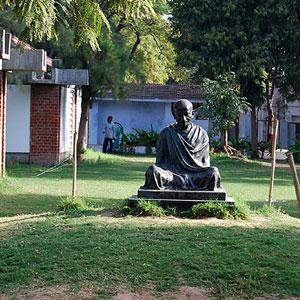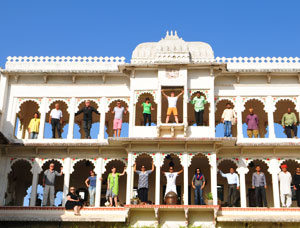
On a recent trip to India and the state of Gujarat, finding local trinkets became a game of meeting the locals and asking questions about how they make each item in the region.
It is a colorful region too, filled with much of the culture from bygone eras.
From local scarves where the craftsmen use block and screen printing, to the hanging, multi-colored trinkets used in homes, and inlaid with small mirrors sewn into the cloth, to the women in the local villages who make the bright and colorful bracelets and necklaces, all place an emphasis on using local materials.
Gujarat is located in the Western part of India and it is where Gandhi hails from, so when you visit, you will find very quickly the entire state is dry, meaning it is alcohol free.
Gandhi’s first Ashram is still located near the city of Ahmedabad, which is the main city in the state.
Places high on the list for visiting in Gujarat include the Rann of Kutch (Rann means Salt Marsh,) where you can stay overnight at a desert safari camp and participate in a safari ride to see jackals, donkeys, desert foxes, and glimpses of the locals creating their wares.
In the Rann of Kutch, the salt marshes played a significant role in Gandhi’s message of freedom for India and even now, this part of the country remains traditional due to this reminder.
 India is primarily Hindu and Buddhist, with many Hindu temples to admire, one is the Modhera Sun Temple where you will see that the shrine in the temple is made in such a way that the Sun’s first rays illuminate the image of Lord Surya inside. Another feature of the Sun Temple includes one temple within the complex where hundreds of bats hang and are the size of hummingbirds.
India is primarily Hindu and Buddhist, with many Hindu temples to admire, one is the Modhera Sun Temple where you will see that the shrine in the temple is made in such a way that the Sun’s first rays illuminate the image of Lord Surya inside. Another feature of the Sun Temple includes one temple within the complex where hundreds of bats hang and are the size of hummingbirds.
For a real look into this area’s past, spend the night at the Darbargadh Poshina Palace set in tribal lands. The food is delicious and the maharaja continues his family’s eight generations of owning the palace in the village of Poshina. There are several knife makers left in the village, about three still do this in the state, and tourists are welcome to watch these craftsmen make the knives like they have done for hundreds of years.
Indeed, with so much to do in Gujarat it is tough to know where to begin, but first and foremost, use a good travel agent to book your trip. My choice is A Classic Tour, as this company will customize your Gujarati trip and show you parts of the state that could easily go unnoticed otherwise.
Visit Gujarat online for more information.
